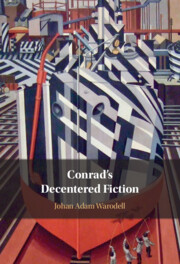Introduction
Published online by Cambridge University Press: 10 March 2022
Summary
There are ways to start an introduction on Joseph Conrad’s works other than by discussing Rembrandt’s sketch of an elephant (Figure 0.1). But what a beautiful elephant this is. It is stamped as a masterful work by the quick interplay of overlapping lines, the sense of ease in its accurate portrayal of movement, and the large signature that signals the artist’s pride. In no obvious way is the depiction of this elephant reminiscent of The Anatomy Lesson, The Night Watch, Belshazzar’s Feast, one of Rembrandt’s self-portraits, or any other of his canonical works. The tired label of chiaroscuro is difficult to apply here. The picture’s material, size, motif and origin as a noncommissioned work preclude it from being classified among the masterworks. Its position on the margin of Rembrandt’s artistic output, however, is unrelated to its inherent artistic skill (it has a more unified display of perspective, light and shadow than The Anatomy Lesson, for instance). Given this marginal position, we can approach Rembrandt’s elephant with fresh eyes: allowing Rembrandt’s art to talk to us directly rather than through the mediation of an established critical response.
- Type
- Chapter
- Information
- Conrad's Decentered Fiction , pp. 1 - 18Publisher: Cambridge University PressPrint publication year: 2022



